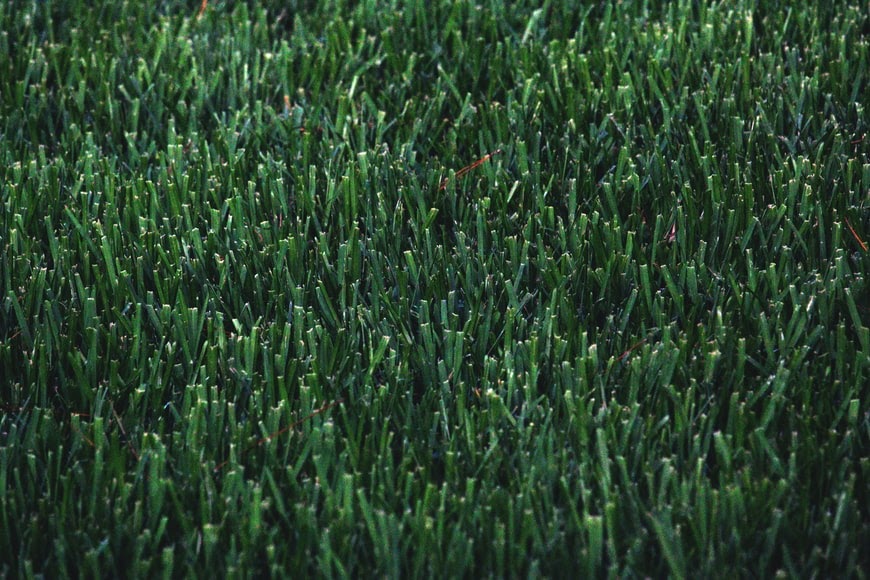Nothing makes a positive impression on the people seeing your home for the first time than a thick green lawn. Not only does a perfect yard enhance the beauty and value of your property, but it also makes every barbeque, lawn party and evening outdoors with the family so much more enjoyable. However, left unchecked, any number of unwanted turf pests can quickly sabotage your lawn and leave you with a dusty patchwork of brown and yellow destruction. This article from The LawnShed will help you quickly identify which common lawn pests are killing your turf and put you in contact with the pros to keep your lawn looking beautiful.
With any infestation, early detection is the key to stopping and reversing the destruction caused by caterpillars, ants, grubs, mites and crickets, to name just a few. Once you’ve identified your enemy, The LawnShed can provide the perfect remedy from our top-of-the-line pest controls.
So, What’s Making My Lawn Look Like the Surface of the Moon?
Well, the truth is there’s lots of lawn pests but we’ve simplified things because they fit into five key categories:
- Caterpillars/Moths
- Beetles
- Mole Crickets
- Mites
- And others, like ants and earthworms
Caterpillars/Moths
This includes some common ones like Lawn Armyworm and sod webworm but also includes Cutworm, couchgrass webworm which are a little lesser known. Caterpillars is the best way to describe these pests that feed on your lawn. During their larval (caterpillar stage) they are very aggressive feeders (remember the story of the very hungry caterpillar?).
Caterpillar damage can be identified in 2 ways, finding the caterpillar (obviously) and also looking for their specific feeding habits. Caterpillars strip the lawn of leaf foliage leaving it a distinct brown colour, however they are nice enough to leave many of the below ground growing points intact. This makes it easier as a treatment of Acelepryn and a good feed of Renovate usually has the lawn bouncing back quickly.
Beetles
No not Ringo, Paul, John and that other guy. We’re talking about African Black Beetle, Billbugs and even Weevils.
Beetles are also alot like moths, once again it’s the larval stage that does the most damage. While we may often see the adult black beetle above the ground wandering around at night, it’s his more juvenile stage, the larvae stage that does most of the damage. These pests in their larval stage are often grouped together as “white grubs” because they look just like that, white grubs with yellow to orange heads. Sometimes also called “curl grubs” because they curl up when found. They all vary in size and they are all very damaging to your lawn. While slower to destroy your lawn than caterpillars the damage can be worse. These guys don’t mess around with the leaves that grow back, preferring instead to attack the more succulent (their words not mine) stems and roots of the plant. This poses a more serious problem to your lawn because without roots and stems the lawn won’t survive.
The lawn will tend to turn yellow if you have these guys and the easiest way to tell if you have these buggers is to pull the yellow turf. There should be leaf still in the area but when you rub your hand vigorously over the area the leaves simply pull out and away as there’s no roots or stems to hold onto it. Again, Acelepryn is your friend here as it attacks the larvae unlike many other insecticides. Treat in September to ensure full 6 month control.
Mole Crickets
Sometimes called the platypus of the insect world, the Mole Cricket is one of the most distinguishable threats to the lawn surrounding your home. They are brown with large, shovel-shaped heads adorned with two thread-like antennae and beady eyes. These 3 cm long crickets possess powerful, flattened forelegs with mole-like appendages that make them prodigious diggers. Their hind legs, which are less developed than other crickets, have evolved more to push excavated soil than for leaping. They are called “mole” crickets for a reason, their tunnels leave a distinct mole or “Bugs Bunny” style trench across the surface of your lawn. In addition to this sign, you may see the sign of a wasp, The Blue Ant, who loves to feed on them.
Mole Crickets prefer moisture-rich soil, so regularly irrigated golf courses and homes with lawns are much more susceptible to these pests. Adult crickets and older nymphs over-winter in the soil and lay their eggs underground in the spring, meaning maximum damage occurs in late summer and early autumn.
For the best advice on how to care for your lawn and prevent Mole Crickets and other pests from getting a foothold in your turf, check out The LawnShed’s Lawn Care 101 page.
Mites
These nearly invisible lawn killers are so tiny that they are virtually impossible to see without some form of magnification. Owing to their diminutive size and nearly translucent colour, you’re more likely to notice the damage they’re doing to your lawn long before you see one. Unlike other common lawn pests that maim your grass simply by chewing out its roots and stems, mites inject toxins into the plants, which can remain long after an infestation has been eradicated. For this reason, detecting Mites early on is critical. Be on the lookout for them in the dry, summer months, as they prefer a more arid habitat to breed in.
Where most lawn parasites’ feeding results in dead brown patches of grass and dust, the toxin that mites inject into the stems of your grass causes the plants to first turn chlorotic in colour before “growth clumping” occurs. The result is an unsightly, sporadic network of bare patches and exposed soil around your yard. In addition to the dull yellowing of your lawn, the leaves of your grass will develop malformed and appear similar to a “witch’s broom.” If the infestation is left untreated or allowed to progress for any significant amount of time, you could conceivably lose your lawn altogether.
Mites have a very short life cycle of 5 – 14 days, meaning they can take hold quickly and cause extensive damage in a matter of weeks, if not days. It’s important to note that, while originally only thought to be a pest of couch grass they are a threat to any warm-season variety of grass, not just couch.
The mite is a formidable pest and sadly isn’t a once a year application, we recommend a discussion with the lawn genius to get the best plan of attack for this foe.
Ants and Earthworms
Leave them be we say, but we just wanted to let you know they could be the culprits causing unsightly damage to your lawn.
Of the roughly 1,300 known ant species in Australia, only a handful are considered common household pests. Of these six to eight unwelcome invaders, the Funnel Ant is the most likely culprit turning your lawn into an unsightly mess. This industrious insect derives its name from the cone or funnel-shaped entrance created by the excavation of their underground nests, which appear as miniature volcanoes on your lawn. Above ground, the cones can stand up to 30 cm tall; however, it is below the surface where the greatest danger to your property lies. Funnel Ant nests can be so dense and extensive that they affect soil structure, making your yard fragile and susceptible to collapse.
Earthworms are fantastic contributors to your lawns soil but as soon as things get wet they love to come out and leave mounds on the surface of your lawn.
For the best advice on how to rid your lawn of Funnel Ants , check out our Q&A page or drop us a line with any questions. Bet you can’t stump us.

